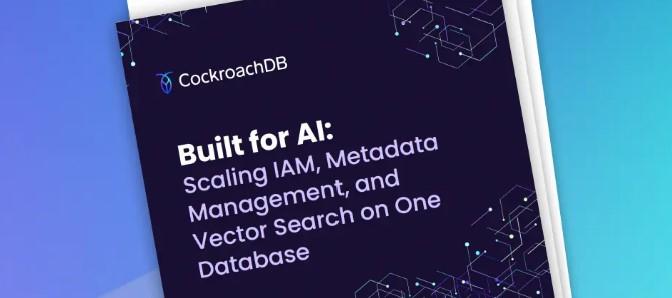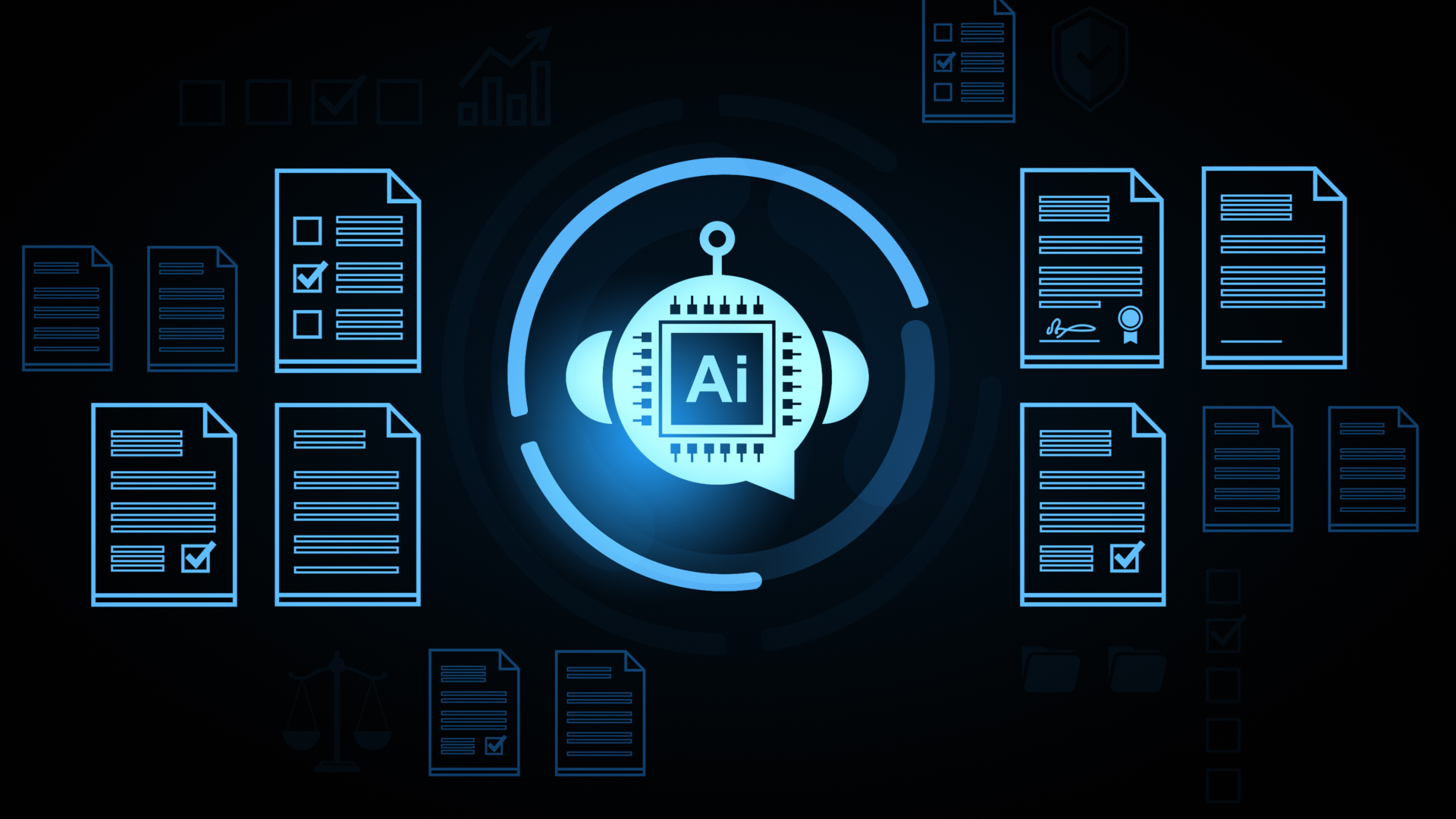To scale AI securely, your identity layer must be resilient, consistent, and globally available – starting with the right cloud-native database.
Every AI application – whether it's an LLM-powered chatbot, an API platform, or a generative service – depends on a secure, always-on identity layer. IAM (identity access management) determines who gets access, what they can do, and how long their session lasts. When the database behind IAM fails, so does the AI experience.
Here are seven capabilities your cloud-native database must deliver to support IAM at AI scale.
1. Elastic Scalability for Spiky AI Workloads
“AI adoption doesn’t grow linearly – it surges,” says David Joy, Senior Manager, Sales Engineer for Cockroach Labs. “One day your chatbot attracts a steady flow of users, and the next it explodes across social media. Meanwhile, inference APIs get hammered by unpredictable bursts of traffic. Each spike means millions of sudden login and token validation requests that can overwhelm an unprepared identity system.”
Look for: a database with horizontal scaling, automatic rebalancing, and elasticity without manual sharding.
The result: IAM that scales in step with your AI application’s traffic—without trapping engineers in firefighting mode.
2. Strong Consistency to Prevent Authorization Failures
In identity access management, consistency is crucial. When your architecture spans multiple regions, the risk multiplies: a token accepted in one geography but invalid in another can instantly break authentication flows – or worse, allow unauthorized access. Latency between replicas, if not properly managed, can create small but dangerous windows where users see different states of truth. Out-of-sync tokens create outages. Worse, they create security vulnerabilities.
Look for: an AI database with serializable isolation, atomic transactions, and globally consistent state.
The payoff: every login, every token check, every session refresh reflects the latest truth, no matter the region.
3. High Availability and Zero Downtime Built In
“AI systems run globally, 24/7, and users expect them to be always available,” Joy notes. “If the identity layer crashes, every login request fails, and critical workloads grind to a halt. Resilience can’t be an afterthought – it must be engineered into the database from the start, ensuring IAM never becomes a single point of failure. If the IAM system is down, effectively every system is down. That’s unacceptable.”
Look for: multi-active availability, zero-downtime upgrades and schema changes, and automatic rebalancing of workloads should nodes fail.
Developer impact: no 2 a.m. calls for cluster restarts.
Business result: uninterrupted access = uninterrupted revenue.
4. Fine-Grained Access Controls for Sensitive AI Systems
AI workloads often touch sensitive or regulated data, from medical records to financial transactions to private conversations with an LLM. That means IAM can’t just authenticate users; it has to enforce least-privilege access across roles, regions, and APIs. Policies need to be precise, enforceable everywhere, and resilient to scale as AI adoption accelerates.
Look for: role-based access control (RBAC), flexible schemas, and integration with OAuth, OIDC, or SAML.
The result: developers define policies once, with automatic enforcement at global scale.
5. Compliance and Security for Regulated AI Workloads
“Identity data faces the strictest regulatory scrutiny,” says Joy. “For AI companies operating across multiple regions, meeting those obligations is not optional – it’s table stakes. Privacy laws, industry standards, and customer expectations all converge on the database layer, which must enforce compliance automatically, not through brittle workarounds. Without built-in controls, every new region or dataset risks creating a liability.”
Look for: geo-partitioning for data residency, encryption in transit and at rest, and detailed audit logging.
The benefit: you meet GDPR, HIPAA, or SOC 2 obligations without building custom plumbing.
6. PostgreSQL Compatibility for Developer Velocity
“Identity access management evolves quickly,” Joy observes. “Requirements change as AI applications add new endpoints, new users, and new compliance obligations. Developers can’t afford to relearn proprietary query languages or wrestle with unfamiliar tooling every time the identity layer grows more complex. They need familiar tools and interfaces, not specialized systems that slow them down.”
Look for: PostgreSQL compatibility, SQL query support, and seamless integration with modern identity frameworks.
Developer impact: less time building glue code, more time shipping features.
Business result: faster time-to-market for AI products.
7. How to Evaluate Database Approaches for IAM in AI Applications
“Different categories of cloud-native databases have unique strengths for identity access management,” says Joy. “IAM calls for a mix of transactional consistency, global availability, and operational speed that not all categories can deliver equally.”
Here’s a comparative framework:
Vector-first databases: These are designed to store and query embeddings efficiently, making them ideal for similarity search. However, they are not optimized for transactional identity workloads where strict consistency and relational joins are critical.
NoSQL systems: Built for high-volume, unstructured, or semi-structured data, they excel at horizontal scale. Their tradeoff is weaker transactional guarantees across regions, which can be a problem for globally distributed IAM.
Analytical data warehouses: Optimized for large-scale reporting and insights, these systems are best for batch analytics. They are not designed for the low-latency, high-concurrency transactions that authentication and authorization flows demand.
Distributed SQL platforms: These combine the scale-out architecture of cloud-native systems with the strong consistency and relational semantics of SQL. That makes databases like CockroachDB uniquely suited for IAM, especially in AI environments where both global consistency and vector capabilities are becoming essential.
The takeaway: IAM is fundamentally a transactional workload. While different database categories bring strengths in embeddings, unstructured data, or analytics, distributed SQL is the best fit for IAM in AI applications. It provides strong consistency, global data positioning, and Postgres familiarity, with support for emerging needs like vector data types.
Scale AI Access Globally
“IAM is the gatekeeper of AI,” says David Joy. “Get it wrong, and users can't log in. Get it right, and you build trust at global scale. Your database choice determines whether your identity layer becomes a liability or a foundation for growth.”
“CockroachDB delivers the distributed SQL backbone for IAM in some of the world's largest AI platforms,” Joy continues, “powering secure logins, authorization flows, and compliance at massive scale.”
Ready to learn more? See how OpenAI and Ory deliver global IAM with CockroachDB.
To start building IAM for AI with CockroachDB, talk to an expert today.
David Weiss is Senior Technical Content Marketer for Cockroach Labs. In addition to data, his deep content portfolio includes cloud, SaaS, cybersecurity, and crypto/blockchain.






